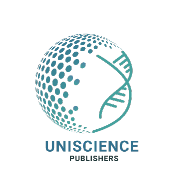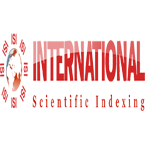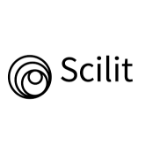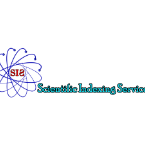Authors are requested to consider the following points before submitting a manuscript.
- Should read & follow the author guidelines narrated on the website.
- The Manuscript should be written in English without grammatical mistakes.
- Authors and Co-authors should take the responsibility for the scientific content and legal aspects of the manuscript.
- Submitted manuscript should not be published anywhere either in print or electronic, and not under consideration by any other publisher.
Types of Manuscripts
Manuscript Structure
Article Processing Charges
Copyright
A research article reports the results of the original research, evaluates its contribution to the body of knowledge in a given field of science and technology; with the framework of an abstract, introduction, materials & methods, results, discussion and references.
A review article surveys and summarizes previously published studies, instead of reporting new facts or analysis. Review article can be any one of these literature, systematic, and meta-analyses. A comprehensive review usually takes 100 or more articles for reference.
A formal summary of a unique patient and his or her illness, including the presenting signs and symptoms, diagnostic studies, treatment course, and outcome. Case report includes an abstract, introduction, case, discussion, conclusion, patient consent and references.
A mini-review details the summary of an individual researcher work with a statement of the main theory of a study, supporting arguments and essential points.
A Rapid Communication or Short Communication that publishes swiftly and usually shorter than an original research article. Scientists use this format when they have findings that need to be shared immediately with the academic community.
Perspective articles are scholarly reviews of fundamental concepts or prevalent ideas in a field. These are usually essays that presents a personal point of view critiquing widespread notions pertaining to a field. A perspective article can be a review of a single concept or a few related concepts.
Commentaries are short articles that draw attention to or present criticism of a previously published article, explaining why it interested them and how it might be illuminating for readers.
Highlights the author personal thoughts, beliefs, or feelings.
An editorial can raise awareness of an issue while also influencing other people’s opinions on that topic.
Letter to the Editor intends to promote further discussion of previously published work and to offer feedback and support to emerging authors.
A collection of academic papers can publish in the context of an academic conference or workshop, which contain the contributions made by researchers.
The manuscript should ideally be formatted in Word i.e. Microsoft word (DOC, DOCX).
Manuscript title limit should not exceed 30 words. It should not contain abbreviations and the title should be a brief phrase which describes the contents present in the article.
Full Name, Department/Institution/University, City, Country should be drafted with the article.
Full Name, Department/Institution/University, City, State, Country, Telephone, Fax and Email.
Should be relevant, self explanatory, exhaustive and brief in nature connected to the total subject matter and give a conception as a summary to the detailed script depict by the author while getting the experiment findings in a comprehensive manner. It should also relate to significant outcome and further scope to continue in the field.
In alphabetical order, separated by semicolons and exhibit catchy nature with respect to the subject.
States the reason for the research: identifies and discusses findings of others, includes a review of the literature.
Describes the research population or study sample, describes the method used to gather information or data collection and describes the means used for measuring or measures.
Encapsulates the results and present findings using text, figures, tables, charts, graphs and equations.
Analyzes findings, explains the significance of the research, and suggests future projects.
Includes proclamation of individuals, grant details, funds, and conflict of interest.
Should reflect the most relevant aspects of the results obtained with the study presented.
An alphabetical listing of works that were cited and used to support the research.
The above mentioned structure mainly relatable to the original research article, the authors can arrange the text of manuscript accordingly to their work, i.e. a review, case report, mini-review, rapid/short communication, perspective, commentary, editorial, letter to the editor and proceeding.
In preparing the manuscript, an author may have information that can present more efficiently in a figure or table. Figures tend to summarize information visually, whereas tables allow space for more detail. Figures, tables, and legends should be placed close to the relevant content of the text. In addition, figures and tables should number in the order of their appearance in the text. All Figures must be clearly visible and should be submitted in JPEG, TIFF and EPS format.
Usually, the first sentence or phrase contains text explaining a figure and to be placed below the figure.
Example: Figure 1. Flowchart of patient selection.
If a figure have multiple parts, or panels. The usual approach to label each of these with a letter: A, B, C, etc.
Example: Figure 2. The effects of risolol before and after animals were fed. (A) Risolol effects before feeding. Animals showed no changes in heart rate. (B) Risolol effects after feeding. Heart rate went up 10-fold, on average.
Usually, they consist only of a single phrase or sentence and to be placed above the table.
Example: Table 1. Patient characteristics.
If any need to provide more detail about what a table shows, can use a table footnote, which usually appears after the table. In the footnote, the author can define terms that abbreviated in the table, indicate the meaning of any superscript symbols used, and any other notes that help the reader understand what the table shows. These notes could include information about comparisons with different numbers of participants, or a methodological difference between comparisons in the table.
A Figure should be cited in text as Figure 1 and for panels as Figure 1A & Figure 1B etc.
A Table should be cited in text as Table 1 and if necessary can cite as Table 1A & Table 1B for two tables that belongs to the same context.
The author should use APA style in-text citation while referencing a published work.
| Author Type | Parenthetical Citation Example | Narrative Citation Example |
|---|---|---|
| One Author | ||
| First citation | (Johnson, 2020) | Johnson (2020) |
| Subsequent citations | (Johnson, 2020) | Johnson (2020) |
| Two Authors | ||
| First citation | (Smith & Jones, 2020) | Smith and Jones (2020) |
| Subsequent citations | (Smith & Jones, 2020) | Smith and Jones (2020) |
| Three or more Authors | ||
| First citation | (Carlson et al., 2020) | Carlson et al. (2020) |
| Subsequent citations | (Carlson et al., 2020) | Carlson et al. (2020) |
| Group Author with Abbreviation | ||
| First citation | (Centers for Disease Control and Prevention [CDC], 2020) | Centers for Disease Control and Prevention (CDC, 2020) |
| Subsequent citations | (CDC, 2020) | CDC (2020) |
| Group Author without Abbreviation | ||
| First citation | (University of Wisconsin, 2020) | University of Wisconsin (2020) |
| Subsequent citations | (University of Wisconsin, 2020) | University of Wisconsin (2020) |
References to other publications should be in APA style and carefully checked for completeness, accuracy and consistency. At the end of the paper a reference list in alphabetical order should be supplied.
Author’s Last Name, First Initial. Middle Initial. (Year of Publication). Title of article. Name of Journal, volume(issue), pages.
Example:
Hise, G. (1993). Home building and industrial decentralization in Los Angeles. Journal of Urban History, 19(6), 95-125.
- Author’s Last Name, First Initial. Middle Initial. (Year of Publication). Title of article. Name of Journal, volume(issue), pages. doi number with URL
- Author’s Last Name, First Initial. Middle Initial. (Year of Publication). Title of article. Name of Journal, volume(issue), pages. Retrieved from complete URL
Examples:
- Denk, W., Strickler, J. H., & Webb, W. W. (1990). Two-photon laser scanning fluorescence microscopy. Science, 248(4951), 73-76. https://doi.org/10.1126/science.2321027
- Banham, G. (2001). Transcendental philosophy and artificial life. Cultural Machine, 3. Retrieved from http://www.culturemachine.net/index.php/cm/article/view/286271
Author’s Last Name, First Initial. Middle Initial. (Year of Publication). Title of book: Subtitle of book (edition). Publisher.
Examples:
- Sternberg, E. (2000). Just business: Business ethics in action (2nd ed.). Oxford University Press.
- Utah Association of Counties. (1981). Utah county facts book. Utah Association of Counties.
- Ermann, M. D., Williams, M. B., & Shauf, M. S. (Eds.). (1997). Computers, ethics, and society. Oxford University Press.
- Author’s Last Name, First Initial. Middle Initial. (Year of Publication). Title of book: Subtitle of book (edition). Publisher if previously published. Retrieved from home URL for authoritative website
- Author’s Last Name, First Initial. Middle Initial. (Year of Publication). Title of book: Subtitle of book (edition). Publisher if previously published. doi number with URL
Examples:
- Speed, H. (2004). The practice and science of drawing. Seeley Service. Retrieved from http://www.gutenberg.org/etext/14264
- Rodriguez-Garcia, R., & White, E. M. (2005). Self-assessment in managing for results: Conducting self-assessment for development practitioners. World Bank. https://doi.org/10.1596/9780-82136148-1
Author’s Last Name, First Initial. Middle Initial. (Date of Publication). Title of chapter or article. In Editor #1 First Initial. Middle Initial. Last Name, & Editor #2 First Initial. Middle Initial. Last Name (Eds.), Title of book: Subtitle of book (pp. Pages). Publisher.
Examples:
- Grealy, L. (2002). Fear itself. In T. Roberts, M. Moser, D. LePan, C. Lawson, J. Gaunce, & J. Britton (Eds.), The Broadview anthology of expository prose (pp. 450-461). Broadview.
- Meiland, J. (2003). The difference between high school and college. In R. K. Durst (Ed.), You are here: Readings on higher education for college writers (pp. 104-114). Prentice Hall.
- Balsam, K. F., Martell, C. R., Jones, K. P., & Safren, S. A. (2019). Affirmative cognitive behavior therapy with sexual and gender minority people. In G. Y Iwamasa & P. A. Hays (Eds.), Culturally responsive cognitive behavior therapy: Practice and supervision (2nd ed., pp. 287-314). American Psychological Association. https://doi.org/10.1037/000119-012
Author’s Last Name, First Initial. Middle Initial. (Date of Publication or Update). Title of work. Site name. Retrieved Month Day, Year, from URL from Homepage
Examples:
Bologna, C. (2018, June 27). What happens to your mind and body when you feel homesick? HuffPost. https://www.huffingtonpost.com/entry/what-happens-mind-body-homesick_us_5b201ebde4b09d7a3d77eee1
Group author:
United States Department of Education. (2009, October 22). U.S. Secretary of Education Arne Duncan says colleges of education must improve for reforms to succeed. http://www.ed.gov/news/pressreleases/2009/10/10222009a.html
Individual Author:
Martin Lillie, C. M. (2016, December). Be kind to yourself: How self-compassion can improve your resiliency. Mayo Clinic. https://www.mayoclinic.org/healthy-lifestyle/adult-health/in-depth/self-compassion-can-improve-your-resiliency/art-20267193
Retrieval date:
U.S. Census Bureau. (n.d.). U.S. and world population clock. U.S. Department of Commerce. Retrieved July 3, 2019, from https://www.census.gov/popclock
Author’s Last Name, First Initial. Middle Initial. (Date of Publication). Title of article. Name of Magazine, volume, pages.
Examples:
- Matesi, A. (2001, December). Living well. Professional Builder, 66, 40-50.
- Tanner, J. (2001, February 9). Affordable housing. CQ Researcher, 11.
Author’s Last Name, First Initial. Middle Initial. (Date of Publication). Title of article. Name of Magazine, volume, pages. Retrieved from complete URL
Example:
Grynbaum, M. M. (2008, September 4). A market decline in search of a reason. New York Times Magazine. Retrieved from http://www.nytimes.com/pages/magazine/index.html
Author’s Last Name, First Initial. Middle Initial. (Date of Publication). Article title. Newspaper Title, edition, section, pages (p./pp.).
Examples:
- Brozan, N. (2002, June 16). Where home is a real sanctuary. New York Times, pp. D11+.
- Cold weather chills home building in many states. (2002, February 14). Wall Street Journal, eastern ed., p. B17.
- Home building was off in April. (2002, April 17). New York Times, p. C14.
- Rosenberg, G. (1997, March 31). Electronic discovery proves an effective legal weapon. NewYork Times, p. D5.
- Salij, M . (2001, September 27). These books can help you survive homebuilding. Detroit Free Press, last ed., p. C:8.
Author’s Last Name, First Initial. Middle Initial. (Date of Publication). Article title. Newspaper Title, edition, section, pages (p./pp.). Retrieved from complete URL from authoritative web site.
Example:
Krauss, C. (2008, August 30). Surge in natural gas has Utah driving cheaply. New York Times. Retrieved from http://www.nytimes.com
Author’s Last Name, First Initial. Middle Initial. (Year of Publication). Title of article. Name of proceeding, country, volume(issue), pages. doi number with URL
Example:
Duckworth, A. L., Quirk, A., Gallop, R., Hoyle, R. H., Kelly, D. R., & Matthews, M. D. (2019). Cognitive and noncognitive predictors of success. Proceedings of the National Academy of Sciences, USA, 116(47), 23499–23504. https://doi.org/10.1073/pnas.1910510116
Authors’ suggestions, before or after the publishing process, are acceptable and ensure that the corrections are clearly legible.
All articles published by Uniscience are open access and freely available online, immediately upon publication. Authors are charged with an APC to cover publishing costs includes maintenance of the infrastructure, peer review, copyediting, typesetting, production, hosting, abstracting and indexing services. The APC, only payable when the article got accepted editorially and before publication.
The Article Processing Charges (APC) for each article $1019.
Authors based in low- and middle-income countries may benefit from a discount or waiver, must submit a request when submitting their articles. For any queries or discussions regarding APC, please contact us at: contact@unisciencepub.com.
Authors retain copyright for all articles they publish in Uniscience Journals under an open access, stating that anyone may read, download, copy, distribute, remix, transmit and adapt the work as long as the original published version is cited. This ensures maximum use and exposure to the authors work with appropriate credit.













